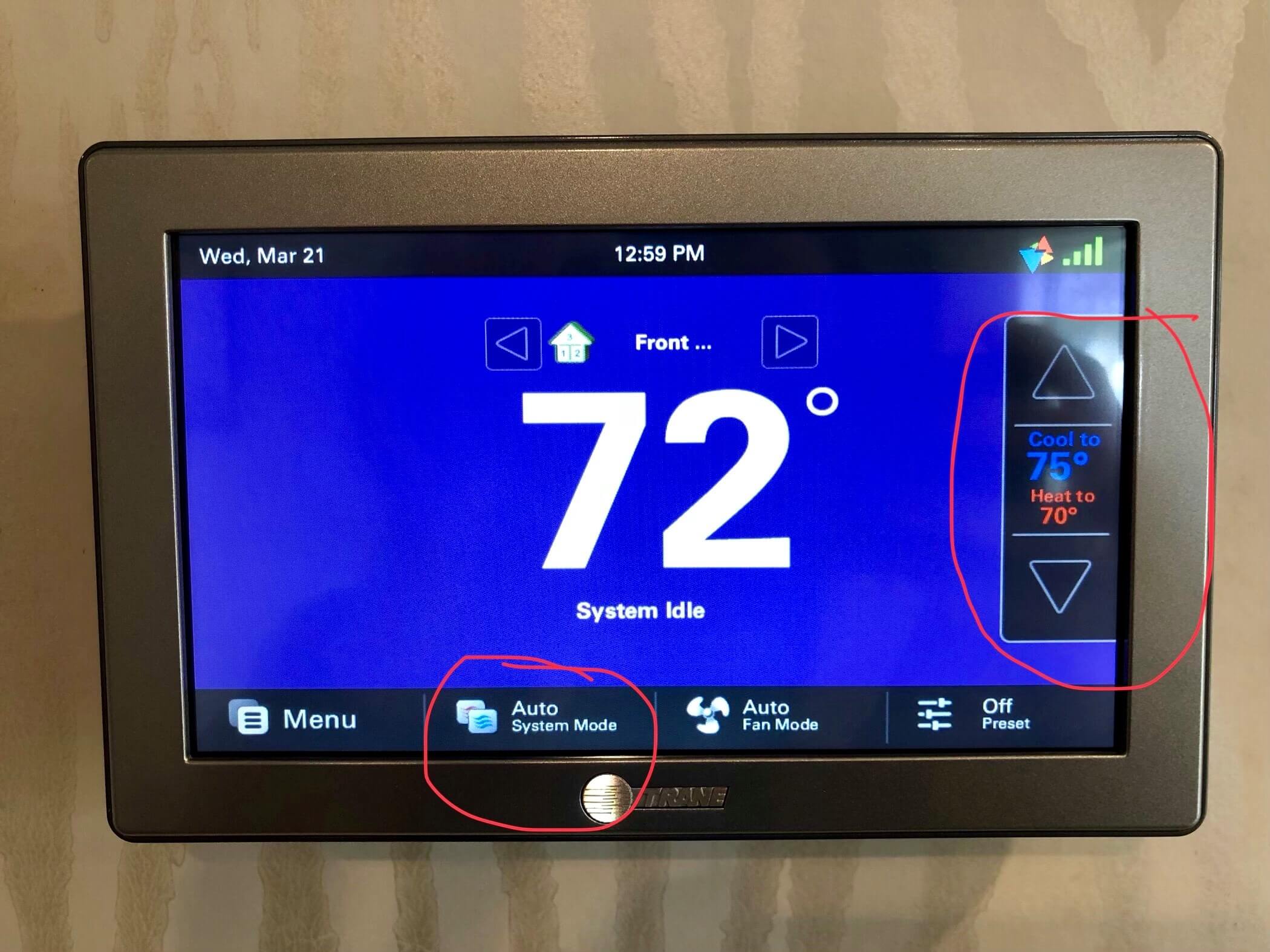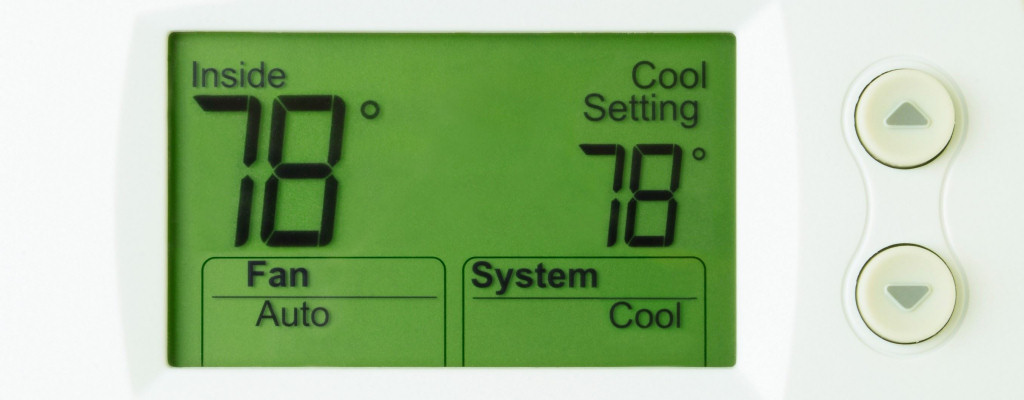What Is Auto On A Thermostat

Navigating the world of thermostats can feel overwhelming, especially with the ever-increasing array of features and settings. One common setting that often leaves homeowners scratching their heads is "Auto." What exactly does "Auto" mean on a thermostat, and how does it differ from other modes like "Heat" or "Cool"? This guide will break down the "Auto" setting, explaining its function, benefits, and potential drawbacks, helping you make informed decisions about your home's climate control.
Understanding Thermostat Modes: A Quick Overview
Before diving into the specifics of "Auto" mode, it's helpful to understand the basic functions of other thermostat settings:
- Heat: This setting activates your heating system to maintain a set temperature. The system will run until the desired temperature is reached, then shut off.
- Cool: This setting activates your air conditioning system to cool your home to a set temperature. The system will run until the desired temperature is reached, then shut off.
- Off: This setting turns off both the heating and cooling systems. While it saves energy, it also leaves your home vulnerable to temperature extremes.
What "Auto" Mode Does
The "Auto" setting on a thermostat essentially combines the "Heat" and "Cool" modes. It allows your thermostat to automatically switch between heating and cooling based on the indoor temperature and your set points. You set two temperatures: one for heating and one for cooling. The thermostat will then determine whether to activate the heating or cooling system to maintain a comfortable indoor environment.
For example, let's say you set your heating temperature to 68°F and your cooling temperature to 75°F. If the indoor temperature drops below 68°F, the heating system will turn on. If the indoor temperature rises above 75°F, the air conditioning system will turn on. The thermostat will automatically manage these transitions.
Benefits of Using "Auto" Mode
"Auto" mode offers several advantages, particularly in climates with fluctuating temperatures:
- Convenience: You don't have to manually switch between heating and cooling as the weather changes. The thermostat handles it automatically.
- Comfort: Maintains a more consistent and comfortable indoor temperature, even during periods of temperature swings.
- Efficiency (Potentially): By automatically switching between heating and cooling, "Auto" mode can, in some cases, lead to better energy efficiency compared to manually switching, as you're less likely to leave the wrong system running unnecessarily. However, this depends on the specific climate and user habits.
Drawbacks of Using "Auto" Mode
Despite its advantages, "Auto" mode also has potential downsides:
- Simultaneous Use: In some systems, both the heating and cooling systems can run simultaneously if the temperature is between the set points, which wastes energy. This is more common in older or less sophisticated thermostats.
- Compressor Wear: Frequent switching between heating and cooling can potentially put extra stress on the compressor of your air conditioner, leading to premature wear and tear.
- Not Ideal for All Climates: In regions with consistently hot or cold weather, "Auto" mode might not be necessary or the most efficient option.
- Higher Energy Bills (Potentially): If the temperature difference between your heating and cooling set points is too small, the system may switch frequently, leading to increased energy consumption.
Factors to Consider Before Using "Auto" Mode
Before deciding whether to use "Auto" mode, consider the following factors:
- Climate: "Auto" mode is most beneficial in climates with significant temperature fluctuations between day and night or between seasons.
- Thermostat Type: Smart thermostats typically offer more sophisticated control and energy-saving features in "Auto" mode compared to older, manual thermostats.
- Personal Preferences: Consider your comfort preferences and how sensitive you are to temperature changes.
- HVAC System Type: Some HVAC systems, like heat pumps, are designed to operate efficiently in both heating and cooling modes, making "Auto" mode a more natural fit.
Tips for Optimizing "Auto" Mode Performance
If you decide to use "Auto" mode, follow these tips to maximize efficiency and comfort:
- Set Reasonable Temperature Differentials: Maintain a reasonable temperature difference between your heating and cooling set points (e.g., at least 5-7 degrees Fahrenheit). This prevents frequent switching and reduces energy waste.
- Use a Programmable or Smart Thermostat: Programmable and smart thermostats allow you to schedule different temperature settings for different times of the day, further optimizing energy efficiency.
- Regular Maintenance: Ensure your HVAC system is properly maintained with regular filter changes and professional tune-ups. This will help it operate efficiently regardless of the thermostat mode.
- Monitor Energy Bills: Keep an eye on your energy bills to see if "Auto" mode is actually saving you money. If not, experiment with other settings.
Popular HVAC Brands and Thermostat Features
Many HVAC brands offer thermostats with advanced features that complement "Auto" mode:
- Nest Thermostat: The Nest Learning Thermostat learns your habits and automatically adjusts the temperature to save energy. It offers features like geofencing, which adjusts the temperature based on your location.
- ecobee Smart Thermostat: The ecobee thermostat comes with room sensors that help balance the temperature throughout your home. It also integrates with voice assistants like Amazon Alexa and Google Assistant.
- Honeywell Home T9 Smart Thermostat: The Honeywell Home T9 uses smart room sensors to focus on the rooms that matter most. You can prioritize specific rooms for comfort and energy savings.
- Carrier Infinity System Control: Carrier's Infinity System Control allows for precise temperature and humidity control. It also provides energy usage reports and maintenance reminders. Carrier systems often boast high AFUE (Annual Fuel Utilization Efficiency) ratings for furnaces and impressive SEER (Seasonal Energy Efficiency Ratio) ratings for air conditioners. Their heat pumps have good HSPF (Heating Season Performance Factor) ratings.
- Trane XL824 Smart Control: Trane's XL824 offers similar features to the Carrier Infinity System Control, including remote access and energy monitoring. Trane, like Carrier, offers HVAC systems with excellent efficiency ratings.
When choosing a thermostat, consider features like:
- Wi-Fi Connectivity: Allows you to control your thermostat remotely via a smartphone app.
- Learning Capabilities: Automatically learns your heating and cooling preferences and adjusts the temperature accordingly.
- Room Sensors: Help balance the temperature throughout your home.
- Energy Usage Reports: Provide insights into your energy consumption patterns.
- Voice Control Integration: Allows you to control your thermostat with voice commands.
Warranty and Maintenance Considerations
When purchasing a new thermostat or HVAC system, be sure to understand the warranty coverage. Thermostat warranties typically range from 1 to 5 years. HVAC system warranties can be more extensive, covering parts and labor for several years. Carrier and Trane, for example, often offer 10-year limited warranties on key components.
Regular maintenance is crucial for maintaining the efficiency and longevity of your HVAC system. This includes:
- Changing Air Filters Regularly: Dirty air filters restrict airflow and reduce efficiency. Replace them every 1-3 months.
- Cleaning Coils: Dirty coils can also reduce efficiency. Have them professionally cleaned every year or two.
- Checking Refrigerant Levels: Low refrigerant levels can indicate a leak and reduce cooling performance. Have them checked by a qualified technician.
- Scheduling Professional Tune-Ups: Annual tune-ups can identify potential problems and ensure your system is running at peak efficiency.
Cost Considerations
The cost of a new thermostat can range from $50 for a basic manual thermostat to $300 or more for a smart thermostat. The cost of a new HVAC system can range from $3,000 to $10,000 or more, depending on the size and type of system.
When comparing costs, consider the long-term savings potential of a more efficient system. A high-AFUE furnace or a high-SEER air conditioner can save you money on energy bills over time.
Making the Right Choice
Ultimately, the decision of whether to use "Auto" mode on your thermostat depends on your individual circumstances and preferences. By understanding the benefits and drawbacks of "Auto" mode, and by considering the factors outlined in this guide, you can make an informed decision that optimizes comfort and energy efficiency in your home. Don't hesitate to consult with an HVAC professional for personalized advice and recommendations.










